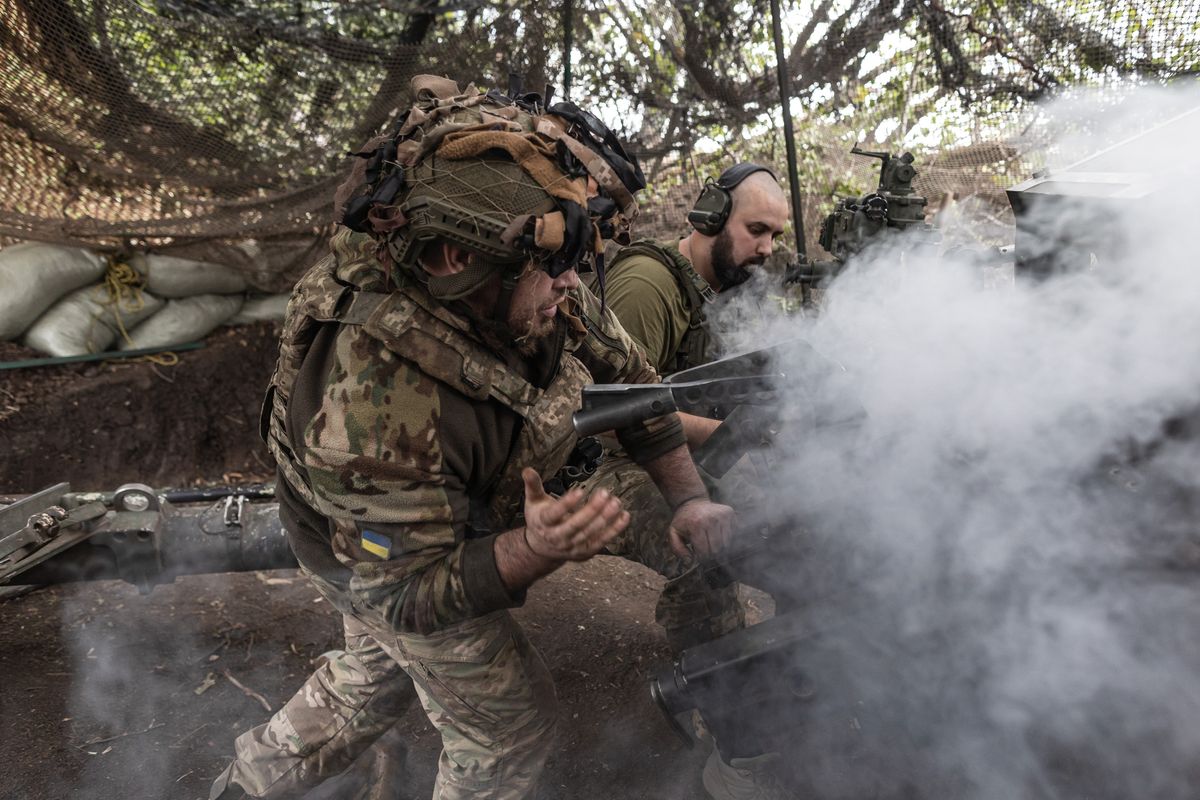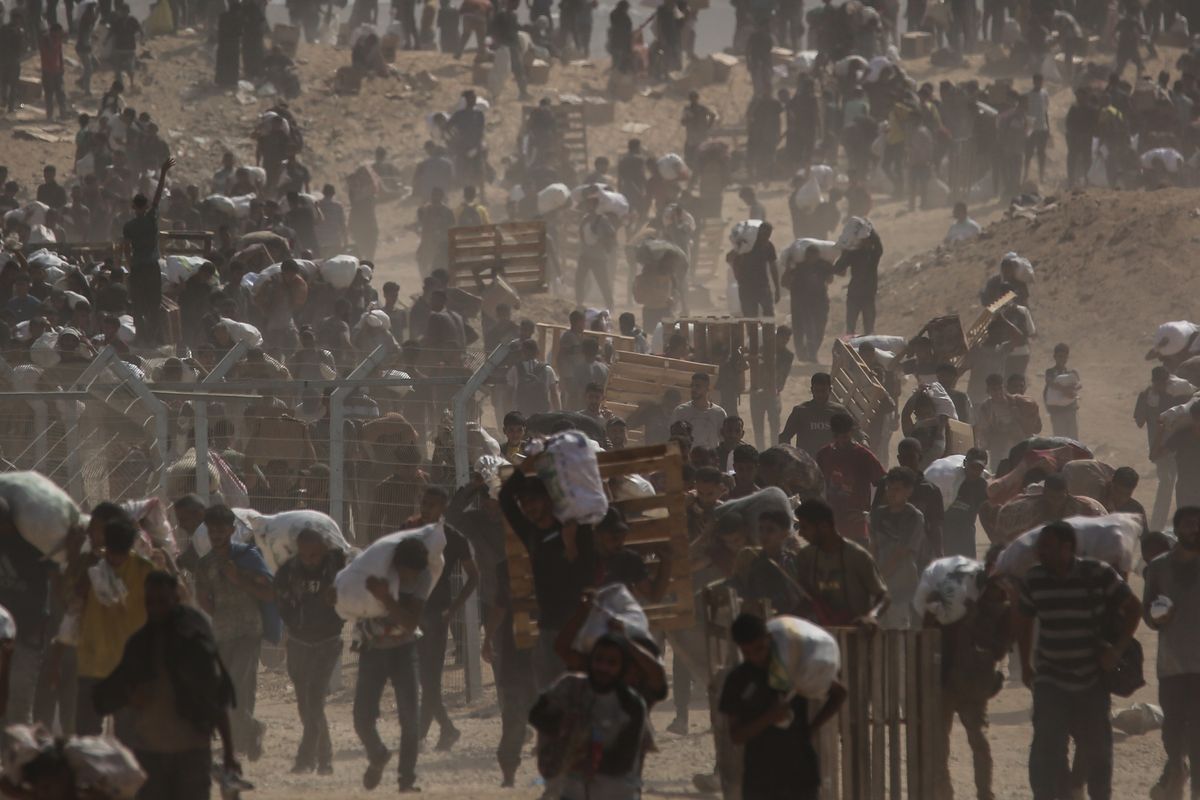A United Nations report delivered to the Security Council last month offered a stark reminder that al Qaeda remains a serious threat around the world. The report suggested that the de-centralized terrorist network is stronger than ISIS in countries like Yemen and Somalia.
The report was issued just before al Qaeda leader Ayman al Zawahiri released a new video calling on Muslims to unite against what he calls an “international infidel alliance”.
U.S. Ambassador to the United Nations Nikki Haley said last week that we “cannot forget the enduring threat posed by al-Qaeda. ISIS may have captured more headlines in recent years, but al-Qaeda leaders are still plotting attacks around the world. This includes a large remaining al-Qaeda presence in Syria, Yemen, and other parts of the world.”
The Cipher Brief tapped its network of experts to better understand the breadth and depth of the al-Qaeda threat, some 17 years after 9/11.
Bottom Line: While the actions of the Islamic State (ISIS) have dominated headlines over the past few years due to the organization’s brutal tactics and ability to capture and sometimes hold, territory across the Middle East, al-Qaeda has quietly rooted itself in several conflicts across Africa, the Middle East and South Asia, where it has seized upon local grievances to appeal to disenfranchised communities and build its brand as a champion of victimized Sunnis. Consequently, al-Qaeda’s strategy, combined with its long-term vision, renders the movement the most dangerous and entrenched terrorist network devoted to carrying out attacks against the West, and the United States in particular.
Background: Al-Qaeda, meaning “the base,” was established in 1988 in the Pakistani city of Peshawar close to the Afghan border under the guidance of Osama bin-Laden, prominent Palestinian cleric Abdullah Azzam, current leader Ayman al-Zawahiri and several hardline mujahedeen rebels who had fought against the Soviet Union during its invasion of Afghanistan in the 1980s.
- In April 1991, Bin Laden and his movement relocated to Sudan for a period of five years, during which Bin Laden was actively searching to procure nuclear weapons. After the Taliban took control of Afghanistan in May 1996, bin Laden and his followers returned to Afghanistan and found safe haven under the Taliban-led government. Bin Laden publicly affirmed his loyalty to Taliban leader Mullah Omar in a video released in mid-2001.
- Al-Qaeda’s international network has conducted several high-profile attacks against U.S. targets around the globe, including: the attempted February 1993 World Trade Center bombing in New York City; the August 1998 bombings at the U.S. Embassies in Kenya and Tanzania; the October 2000 bombing of the USS Cole docked in Yemen; and the September 11, 2001 attacks on New York and Washington.
- Bin Laden served as al-Qaeda’s leader from its inception until his death, which occurred during a May 1, 2011 U.S. special operations raid on his compound in Abbottabad, Pakistan, located about 75 miles north of Islamabad. His deputy, Ayman al-Zawahiri, assumed leadership and reaffirmed the group’s vow to Taliban leader Mullah Mohammad Omar in a video message entitled titled “The Noble Knight Dismounted,” released one month after Bin Laden’s was killed. Since Mullah Omar’s death was revealed in July 2015, al-Zawahiri has pledged allegiance to subsequent Taliban leaders including Mullah Mohammad Akhtar Mansour, who was killed in a May 2016 drone strike in Pakistan, and also to current emir Mullah Haibatullah Akhundzada.
- In August 2005, leading al-Qaeda ideologue Saif al-Adl articulated al-Qaeda’s seven-phase plan, which was initiated in 2000 and is supposed to culminate in the year 2020 with the establishment of an Islamic caliphate and a “definitive victory” against the West.
- Ayman al-Zawahiri remains the leader of al-Qaeda, but Osama bin Laden’s son, Hamza, is believed to be an emerging leader within the organization.
- Al-Qaeda’s ideology pits the movement as the defender of Muslim lands battling Western forces led by the U.S., known as the “head of the snake,” that are attempting to occupy and impose their will on these territories. By assuming violence, al-Qaeda aims to push Western forces out of the region and establish an Islamic caliphate.
David Shedd, Former Acting Director, Defense Intelligence Agency
"Locations such as Libya, Egypt, Somalia, Yemen, Syria and Iraq remain attractive territory from which to draw Sunni recruits while targets for terrorist attacks in Europe, and if at all possible, inside the United States, remain highly attractive."
Issue: Despite years of targeted strikes and raids by the U.S. military and its allies that have decimated core al-Qaeda in Afghanistan and Pakistan, the movement continues to pose a critical threat to U.S. security at home and America’s interests abroad. Al-Qaeda affiliates have enmeshed themselves in ongoing civil conflicts in the Sahel, Somalia, Syria, Yemen and South Asia, where they have garnered support from local communities and have carved out safe havens from which to train, plan and launch attacks.
- “Al-Qaeda almost certainly will remain a major actor in global terrorism because of the combined staying power of its five affiliates. Not all affiliates will have the intent and capability to pursue or inspire attacks in the U.S. homeland or elsewhere in the West. Al-Qaeda’s affiliates probably will continue to dedicate most of their resources to local activity. Al-Qaeda leaders and affiliate media platforms almost certainly will call for followers to carry out attacks in the West, but their appeals probably will not create a spike in inspired attacks.”– 2018 World Wide Threat Assessment
Admiral James 'Sandy' Winnefeld, Former Vice Chairman, Joint Chiefs of Staff
"My sense is that the al Qaeda brand is severely tarnished within the Muslim world. Nothing succeeds like success. Al Qaeda's stock soared in the wake of 9/11 when they conducted a highly credible, game-changing attack on a vulnerable enemy, and became public enemy number one. However, now that they have been seriously beaten down, their message coming from South Asia seems shrill and tinny. Ayman al-Zawahiri has little gas left in the tank, and I've not seen evidence of a charismatic leader emerging in his wake."
- Decimated by the U.S. invasion of Afghanistan in October 2001 and America’s subsequent counterterrorism efforts, core al-Qaeda has taken a back seat to its affiliates, though it remains the brain of the al-Qaeda nervous system. Al-Qaeda leader Ayman al-Zawahiri – presumed to be residing in the vicinity of the Afghanistan-Pakistan border – continues to release audio messages sanctioning decisions undertaken by affiliate groups and declaring that the U.S. remains the number one enemy of Muslims worldwide. In his most recent video released in August 2018, al-Zawahiri points to the Taliban’s Islamic Emirate in Afghanistan as an example for Muslims to emulate.
Mitch Silber, Former Director of Analysis, NYPD
"As recent reporting from Afghanistan has documented, the U.S. is no longer really fighting al-Qaeda there, leaving the question open as to where are its central leadership — where is al-Zawahiri and where is Hamza bin-Laden, the heir apparent to the organization and maybe even more importantly — what is the nature of the cadre of followers that surround them? Can they mobilize followers and operatives to conduct deadly attacks globally? The absence of significant al-Qaeda led attacks out of regional theaters calls into question what command structure surrounds al-Zawahiri and Hamza bin Laden."
- Al-Qaeda’s North African offshoot, al-Qaeda in the Islamic Maghreb (AQIM),was created in January 2007 and initially fixated its operations in and around the Algerian capital of Algiers, conducting more than 600 attacks against Algerian government targets. Eventually, the Algerian army pushed AQIM southward, where, in June 2012, it hijacked an ethnic Tuareg-nationalist rebellion in Mali and assumed control over the northern Mali region of Azawad. From there, AQIM has continued to orchestrate attacks throughout the Sahel region, including targeting several western hotels in Mali and in neighboring Burkina Faso. Of all the al-Qaeda affiliates, AQIM is most notorious for kidnapping foreigners, and turning hostages into profits. Between 2008 and 2014, AQIM received approximately $91.5 million dollars in ransom payments, nearly three times the amount of the second largest total, which was generated by al-Qaeda’s Yemeni offshoot during that same period of time.
- Al-Shabab, meaning “the youth,” was formed in December 2006 and was designated by the U.S. State Department as a Foreign Terrorist Organization in March 2008. The group officially pledged allegiance to al-Qaeda in February 2012 and remains al-Qaeda’s affiliate in East Africa. Al-Shabab operates primarily in southern Somalia, but has orchestrated attacks across the country, in the self-declared republic of Somaliland and in neighboring Kenya, Uganda and Djibouti. Despite concentrated international efforts headed by the African Union Mission in Somalia (AMISOM) to oust al-Shabab from its areas of operation, the group continues to mount deadly attacks on a regular basis and poses a significant threat to regional stability in the Horn of Africa.
Al-Qaeda’s Syrian offshoot, formerly known as Jabhat al-Nusra or the al-Nusra Front, emerged in January 2012 against the backdrop of the Syrian civil war and has strategically positioned itself as the largest rebel force battling the regime of Syrian President Bashar al-Assad. Jabhat al-Nusra served as al-Qaeda’s overt Syrian affiliate until July 2016, when leader Abu Muhammad al-Joulani announced that his group was “splitting” from the al-Qaeda network and rebranding itself as Jabhat Fateh el-Sham or JFS. However, there was significant skepticism that a real separation had occurred. In January 2017, JFS merged with four smaller Syrian jihadist factions to form an umbrella organization called Hayat Tahrir al-Sham (HTS), an estimated force of at least 10,000 fighters that now dominates approximately two million people living in Syria’s northwestern Idlib province.
- Al-Qaeda burst onto the scene in Yemen in October 2000 after carrying out the bombing of the USS Cole. The network’s Yemeni branch, al-Qaeda in the Arabian Peninsula (AQAP), was officially formed in January 2009 and infamously helped facilitate the attempted Christmas Day underwear bombing of Northwest Airlines Flight 253. The group has produced some of the network’s most impactful and dangerous figures, including notorious cleric Anwar al-Awlaki (killed in 2011), Umar Farouk Abdulmutallab (also known as the underwear bomber), now-deceased former commander Naser al-Wuyahshi and believed to be deceased bomb maker Ibrahim al-Asiri. More recently, AQAP has exploited the ongoing civil war in Yemen to increase its influence and attract new recruits by offering key social services to a population ravaged by constant violence, starvation and disease. Throughout the conflict, AQAP has proven resilient by returning to liberated areas once security forces vacate. The group continues to amass support by actively fighting against the Houthis in southern Yemen alongside many local tribes, and remains focused on launching attacks against the West, as demonstrated by the numerous warnings issued by the Department of Homeland Security over the past year about threats to commercial aviation originating out of Yemen.
- Al-Qaeda in the India Subcontinent (AQIS) was born in September 2014 when al-Zawahiri released a video announcing the creation of an al-Qaeda affiliate spanning Afghanistan, Pakistan, India and Bangladesh and appointed Asim Umar, a former commander in the Pakistani Taliban, as the group’s leader. Over the last few years, AQIS has carried out several attacks in the region, most notably a spree of hacking deaths against secular activists, bloggers and academics in Bangladesh and Pakistan. In May 2015, Umar published a video in which he said AQIS carried out the attacks, declaring that the group “assassinated several blasphemers of the Prophet and insulters of Islamic law.”
John Bennett, Former Director, CIA National Clandestine Service
"AQ continues to control space in Yemen and could rebuild if allowed to once again establish a safe haven in Afghanistan. There may be a viable pool of recruits from those who responded to ISIS’ call to arms in Syria/Iraq, but who have become disillusioned with ISIS’ brutal rule of fellow Muslims. ISIS’ more conventional approach to armed conflict with Western powers and Iran has also proven ineffective. Former ISIS fighters returning home to Europe or elsewhere in the Middle East or Asia could be recruited into the existing AQ networks to conduct more "traditional" terrorist operations."
It remains critical to continue to deny AQ safe havens to rebuild their operational cadre and to disrupt their network infrastructure where it still exists in the West and Arab world. This has been a long fight but we face a very resilient enemy.
Admiral James 'Sandy' Winnefeld, Former Vice Chairman, Joint Chiefs of Staff
"Their strength in Saudi Arabia has been suppressed, and was never really a factor in the Emirates and other nations on the Peninsula. Al Qaeda is slowly being choked as a sideshow in the war in Yemen. It retains some strength in Syria, but has never really been a major player there, and any remnants are about to be crushed by the combined Syrian/Russian offensive around Idlib. Their affiliate in Somalia is a local force, but not a major threat to the West."
Response: U.S. intelligence agencies and law enforcement have worked to capture or kill leading figures of the al-Qaeda movement and ensure that a repeat of 9/11 does not occur on American soil. However, to truly realize the defeat of al-Qaeda, American policymakers may need to go back to the drawing board and reassess how the al-Qaeda threat should be understood.
- The Trump administration has specifically targeted AQAP operatives through air strikes and special operations raids including one that was carried out in Yemen’s central Al-Bayda Province in January 2017 that killed 14 AQAP militants but also cost the life of U.S. Navy SEAL Chief Petty Officer William “Ryan” Owens. S. Central Command later said civilians, including children, may have been killed by aerial gunfire during the raid.
- Under the Authorization for the Use of Military Force (AUMF) passed on September 14, 2001, the U.S. has conducted airstrikes against al-Qaida targets in several countries including Afghanistan, Iraq, Pakistan, Somalia, Syria and Yemen. S. counterterrorism strategy has generally revolved around the tactic of leadership decapitation, executed through targeted strikes or special operations raids. Captured terrorists, including 9/11 plotter Khalid Sheikh Mohammed, have also been sent to Guantanamo Bay where they have been held as prisoners of war.
- The U.S. has also collaborated with and supported partners on the ground in their efforts against al-Qaeda. Last October, the U.S. provided $60 million in support of the G5 counterterrorism initiative, a unified front formed in February 2014 by five countries – Mali, Mauritania, Chad, Niger and Burkina Faso – to combat terrorism in the Sahel region. To date, G5 member states have deployed a total of roughly 5,000 troops that conduct joint patrols aimed at stemming the flow of terror groups and traffickers across porous borders in the Sahel.
Looking Ahead: The ongoing battle against al-Qaeda has honed the United States’ ability to identify and eliminate terrorist leaders, and has also generated increased cooperation among U.S. law enforcement and intelligence to head off potential 9/11-style attacks. But as long as poor governance and instability provides a breeding ground for radical ideology, terrorism will pose a generational challenge.
Mitch Silber, Former Director of Analysis, NYPD
"The most important issue for policy makers and CT professionals is not to be lulled into complacency because of the strong gains that have been made degrading the Islamic State. During the period of 2012-2014, when many administration officials were applauding the "end of al Qaeda", was precisely the period when the Islamic State was building up its infrastructure and capabilities to burst onto the scene and surprise intelligence analysts, CT professionals and policy makers. The question is not if, but what is the next ungoverned area that serves as a"field of jihad" that will attract willing acolytes from the West and around the world and how can it be smothered early."
David Shedd, Former Acting Director, Defense Intelligence Agency
"We need to keep in mind that al Qaeda and its like-minded extremists see their struggle against the infidels as multi-generational and very long term. While facing setbacks, they have accounted for those setbacks in their struggle. Al Qaeda’s ability to recruit new talent is not waning even if their operational space for training and executing their attacks is more challenging today than nearly two decades ago. We must never ever forget that we face a determined enemy intent on “winning the long war."

















